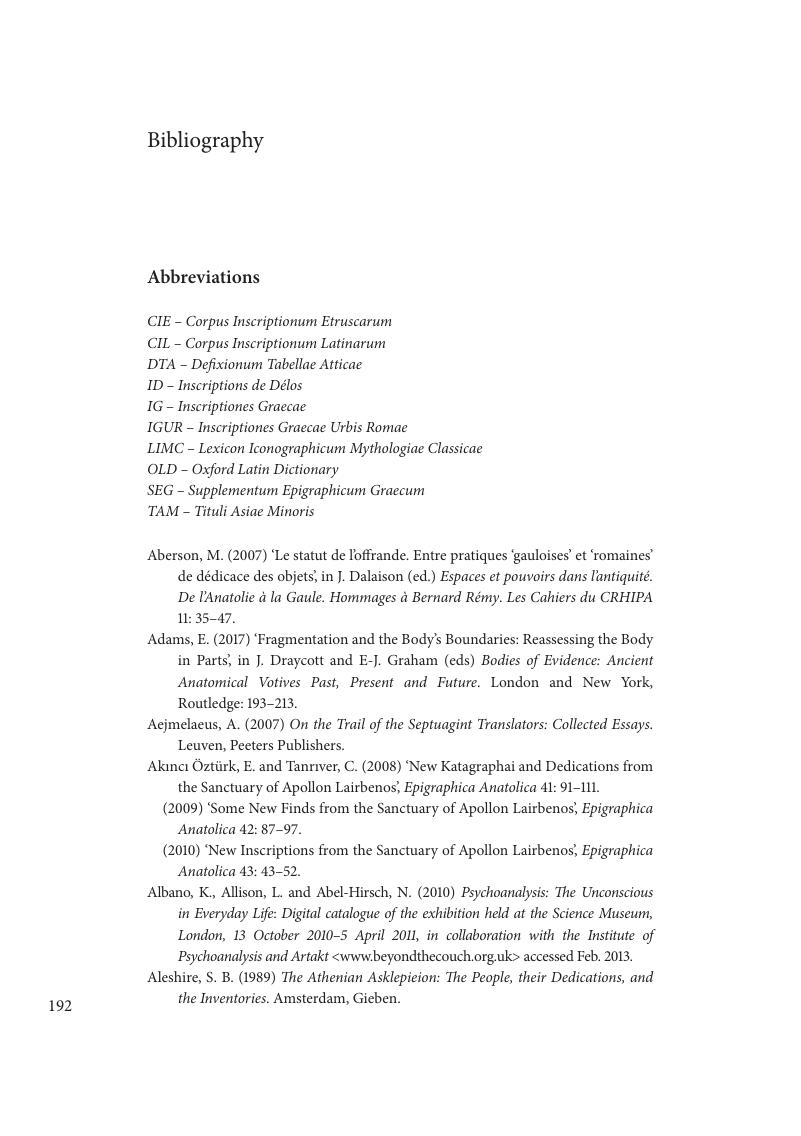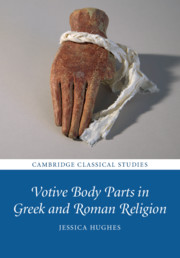Book contents
- Votive Body Parts in Greek and Roman Religion
- Cambridge Classical Studies
- Votive Body Parts in Greek and Roman Religion
- Copyright page
- Contents
- Illustrations
- Acknowledgements
- 1 Introduction: Fragments of History
- 2 Fragmentation as Metaphor: Anatomical Votives in Classical Greece, Fifth–Fourth Centuries BC
- 3 Under the Skin: Anatomical Votives in Republican Italy, Fourth–First Centuries BC
- 4 The Anxiety of Influence: Anatomical Votives in Roman Gaul, First Century BC–First Century AD
- 5 Punishing Bodies: The Lydian and Phrygian ‘Propitiatory’ Stelai, Second–Third Centuries AD
- Afterword: Revisiting Fragmentation
- Bibliography
- Index
- References
Bibliography
Published online by Cambridge University Press: 31 March 2017
- Votive Body Parts in Greek and Roman Religion
- Cambridge Classical Studies
- Votive Body Parts in Greek and Roman Religion
- Copyright page
- Contents
- Illustrations
- Acknowledgements
- 1 Introduction: Fragments of History
- 2 Fragmentation as Metaphor: Anatomical Votives in Classical Greece, Fifth–Fourth Centuries BC
- 3 Under the Skin: Anatomical Votives in Republican Italy, Fourth–First Centuries BC
- 4 The Anxiety of Influence: Anatomical Votives in Roman Gaul, First Century BC–First Century AD
- 5 Punishing Bodies: The Lydian and Phrygian ‘Propitiatory’ Stelai, Second–Third Centuries AD
- Afterword: Revisiting Fragmentation
- Bibliography
- Index
- References
Summary

- Type
- Chapter
- Information
- Votive Body Parts in Greek and Roman Religion , pp. 192 - 217Publisher: Cambridge University PressPrint publication year: 2017



